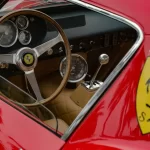#ElaineTrebekKares #FineArt #contemporary #gallery #metaverse #knightsgridgedao
“Friends, NFTs are a New and Revolutionary Way to Invest in fine Art, I am leading the way” — Elaine Trebek-Kares
We have a community of fine art buyers, aficionados and international cryptocurrency billionaires looking for a tangible asset class that has been around longer than blockchain or the Internet: Contemporary Art. Please come join our social media community as we open our symposium and business to enable artists to profit from their work more easily.
The future of art investing begins today.

Inspired by the bold and bright works of Van Gogh, Gaugin, and other emotive painters that came before them, The Fauves became one of the first painter groups of the new Century. Led by Henri Matisse, The Fauves were at the foreground of Expressionism, a movement that, similarly to Symbolism, evoked feeling and ideas through radical imagery and colors. A subjective and individual movement, styles varied greatly between the Fauves and other Expressionist painters but all shared a common goal – to express the meaning of an emotional experience rather than portray a physical reality.
Directly or indirectly, this theme continues throughout the 20th Century in movements like Abstraction, Cubism, and Fantasy. Artists like Pablo Picasso and Marcel Duchamp used imagery in the form of shapes, forms, and colors to depict sexuality, nostalgia, imagination and more, while Jackson Pollock conveyed emotion through the physical act of abstract drip painting.

But not all 20th Century Art was abstract, in New York, the Ash Can School found inspiration from the everyday scenes of the city while elsewhere in America artists primarily painted landscape scenery. George Bellows was among the first ‘modern Realists’, making a mark with his dramatic paintings of boxing matches. Years later, Edward Hopper would come to fame for similar reasons – his paintings of mundane scenes of American life that no one deemed worthy of painting were in fact poetic. American Gothic, Grant Wood’s realist painting of a farmer and his wife, pitchfork in hand, became an icon of 20th Century American art.
I cannot talk about 20th Century Art without the mention of Pop Art.
A reaction to mass and popular culture and consumerism after WWII, Pop Art was an artistic representation of meaningless objects or popular icons such as product labels, celebrities, and even the American flag. While artists from Britain to the USA produced what could be defined as Pop Art, Andy Warhol is the most iconic of them all. While you may not know the name, you’ve surely seen replications of his trademark silkscreen art.
The Minimalist art movement developed in the mid-century, arguably in defiance of Abstract Expressionism’s more explosive approach to art. Paintings were simple and often consisted of mere geometric shapes, repetitious patterns, and monochrome colors. Specific minimalist movements emerged, like Color Field Painting and Shaped Canvas. Mark Rothko, Frank Stella, and Helen Frankenthaler were icons of minimalist painting.

A direct defiance of conceptual art, Neo-Expressionism developed in the ’70s and through the ’80s as a modernized return to Abstract Expressionism. In many ways, it was a return to The Fauves of the early Century with its vivid colors and chaotic brush strokes.
One Neo-Expressionist painter in particular started as a graffiti artist on the streets of New York and would later go on to befriend Andy Warhol and have his works shown at international galleries. His name was Jean-Michel Basquiat and his painting of a skull (Untitled) sold posthumously at auction $110.5-M in May 2017.
Have a happy, prosperous day, Keep the Faith!








